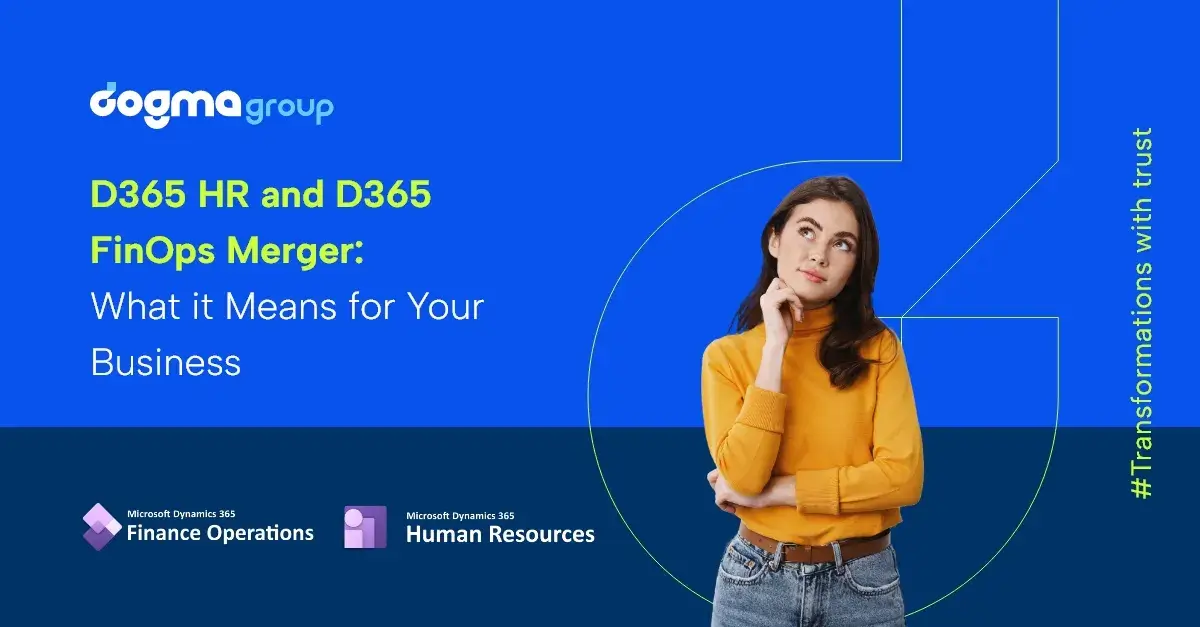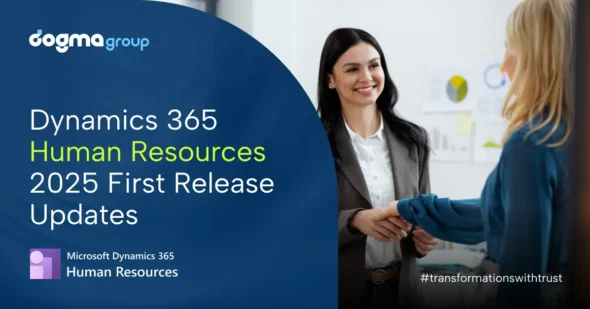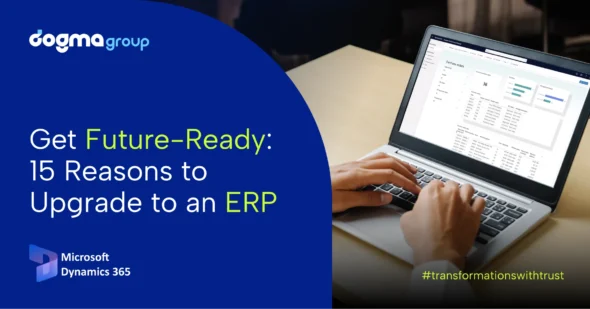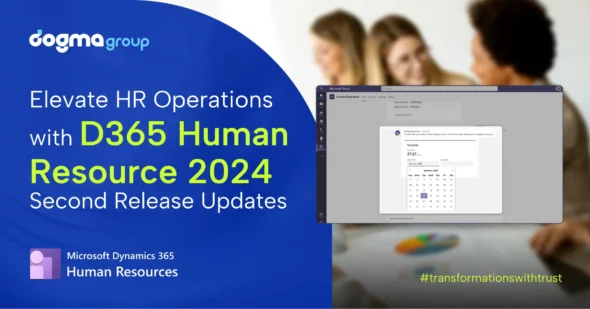Are you perplexed by the infrastructure merger between Dynamics 365 Human Resources (D365 HR) and the legacy HR module in Dynamics 365 for Finance and Operations (D365 FinOps) suite? With the deadline for the migration ending on 31 December 2023, do you have any confusion about what’s your next step and how you’ll transition into the new infrastructure?
Discover why Microsoft made this move, its benefits, and how much it will cost your business. Also, explore all the FAQs regarding this merger to find solutions to all your concerns and plan your next move.
But before that, here’s some context
Microsoft previously had two distinct sets of HR offerings on two separate infrastructures within the Dynamics 365 ecosystem.
First was Dynamics 365 Human Resources, a stand-alone application operating on an independent infrastructure for improving workforce insights and organisational agility.
The second was the HR module, which is part of Dynamics 365 Finance and Operations. It’s a cloud-based ERP system for large organisations and tracks finances and inventories. Although it’s popularly referred to as Finance and Operations, Microsoft licenses it as two separate applications: Dynamics Finance and Dynamics Supply Chain Management. But it is typically a single deployment, and the separate licences mean that businesses can decide if their users can access one or both apps.
Microsoft announced the migration of D365 HR into the D365 Finance and Operations family in its 2021 release wave 2. This infrastructure merger provides unified features for D365 HR that eliminates all overlapping features and cross-app capabilities in the legacy HR module within FinOps.
Why is Microsoft merging these two HR infrastructures?
Microsoft is merging these two HR infrastructures for a good reason. Having two separate HR functionalities on two different infrastructures can cause a lot of confusion for customers. It also keeps businesses from seamlessly leveraging the benefits of each HR capability. With the merging of infrastructures, customers will no longer have to worry about integration between HR and Finance. Also, organisations can harness the power of the shared Dynamics 365 infrastructure, the Dataverse, and the Power Platform.
As for Microsoft, these structural changes will help align the D365 HR capabilities with the rest of the FinOps suite and unify the features.
Through this merger, customers can
- Gain more clarity by eliminating multiple sets of HR capabilities within Dynamics 365,
- Improve extensibility through the Microsoft Power Platform and the extension of business logic and feature options.
- Adopt platform innovations leveraging shared services and tooling as well as reducing platform costs.
- Ensure consistency between HR and other FinOps apps in terms of Application Life Cycle Management, Lifecycle Services, Geographic availability, extensibility, Fast Track, and more.
After this merger, D365 HR will remain a stand-alone application licensed separately.
How will this update impact you?
Each organisation will experience the impact of this infrastructure merger differently depending on how their HR and FinOps environments are set up. But generally, this change puts the existing clients into these groups:
1. Customers with Dynamics 365 Human Resources already in place but no FinOps HR module
If you have only D365 HR in place, you must migrate to the HR module in the FinOps platform. With the FinOps integration, you can leverage the shared services, functionalities, and tools in D365 Finance and Operations. Access to migration tooling for testing and transition has been available since mid-2022.
2. Customers using the FinOps HR module
Businesses using the legacy HR module don’t need to migrate. They will gain additional capabilities of D365 HR into your FinOps apps, like checklists for onboarding and offboarding, leave and absence management, as well as benefits and task management. New features have become generally available since October 2021.
3. Customers with both D365 HR and FinOps HR module
For those with both D365 HR and the legacy HR module in place, the business data will be migrated to the FinOps HR module from D35 HR. Since HR and FinOps overlap in several areas, the cross-app capabilities must be aligned before the transition to ensure compatibility. Access to migration tooling for testing and transition has been available since late 2022.
As for the new customers, we recommend using the D365 FinOps HR module instead of the standalone D365 HR.
FAQs
1. Who needs to migrate?
All businesses on stand-alone Dynamics 365 Human Resources infrastructure must migrate.
2. How long does it take to migrate using automated tooling?
With the automated tooling, the migration may take approximately three to four hours. But the preparation, testing, and validation time required for your business can vary depending on your business processes, integrations, and complexity.
3. What is the deadline for migrating?
All businesses must migrate their stand-alone environments by 31 December 2023.
4. What happens to businesses that don’t migrate before the deadline?
The infrastructure for the standalone application will be turned off by 31 December 2023. Consequently, environments that aren’t migrated will no longer be available.
5. When should my business migrate into the new infrastructure?
The migration for each business can vary depending on existing configurations and organisational readiness. Microsoft recommends working with technology partners to find the best way forward.
- Businesses with the Human Resources module in Dynamics 365 Finance will receive new capabilities from Dynamics 365 Human Resources as part of the regular One Version update process. New features are planned to become generally available in January 2022.
- Businesses with Dynamics 365 Human Resources will have access to tooling for the infrastructure merge. Businesses will have 12 months to make the transition, starting from the time when the migration tooling becomes available.
- Businesses with both Dynamics 365 Human Resources and the Human Resources module can migrate their stand-alone Human Resources infrastructure onto the FinOps infrastructure. Alternatively, they can use the merge tooling to pull the environments into a single environment. There is no requirement or timeframe for merging the two environments.
For information updates, check the Release plans.
6. Will I lose any features or capabilities that I currently use?
This merger will not remove any features or capabilities. Instead, there will be functional uniformity between Human Resources and the HR module. For the common features between the two infrastructures, the Dynamics 365 Human Resources experience will be used.
For businesses with the Human Resources module, features that are exclusive to Dynamics 365 Human Resources will be managed through Feature management.
For businesses with Dynamics 365 Human Resources, features will be available in the infrastructure. Any features that aren’t available will be documented.
7. Will the experience change for my users?
Your users will have the standard Dynamics 365 platform experience after this merger. The general experience for the menus and dashboard will be the same, but it will be aligned with the standard Dynamics 365 Finance app experience. The Dynamics 365 Human Resources workspaces, like Personnel management and People, will merge with the FinOps infrastructure.
8. What will happen to my custom integrations to external systems?
Businesses will have to migrate their integrations to the FinOps environment. Since the endpoint of this environment is different, businesses may have to update or change the integrations to have them pointed to the new environment. Microsoft recommends working with your Dynamics 365 partner to find the best approach for moving integrations.
9. What training and resources will be available to help me with the migration process?
Microsoft will provide a step-by-step guide for the infrastructure merger process. Additional training resources, like videos and workshops, will also be available to help customers and partners with a fluid transition.






